Lures, Jigs & Rigs explained
You may see the title on our website, click into it and up pops a bunch of different shaped shiny objects. Some say they're floating, some say sinking, some fall slowly while others fall quickly, some are long, some a short, some have two hooks, and some have a bunch of pointy hooks. Surfcasting rigs, ledger rigs, strayline rigs, the options are aplenty. If you’re asking yourself “but what does it mean” in your best double rainbow guy voice, here is a short piece where we very simply go through the range and explain some of the differences. These are the very basics, there is some more technical information we will dive into in future posts. Feel free to add any questions at the bottom of this post and we will answer them the best that we can.
As the name suggests, they are made to be fished slowly. They can be broken down into 4 main types: Kabura’s, Slow Pitch jigs, Inchiku jigs and Vibe style jigs.
These are much shorter than mechanical jigs and range from 40-gram options through to 200-grams.
Fish species targeted with slow jigs vary from snapper, kingfish, kahawai, trevally, gurnard, blue cod, and any other reef species.
Burnsco offers a range of lures from quality brands such as Edge Fishing, Ocean Angler, Shimano, Glowbite and Nomad Design.
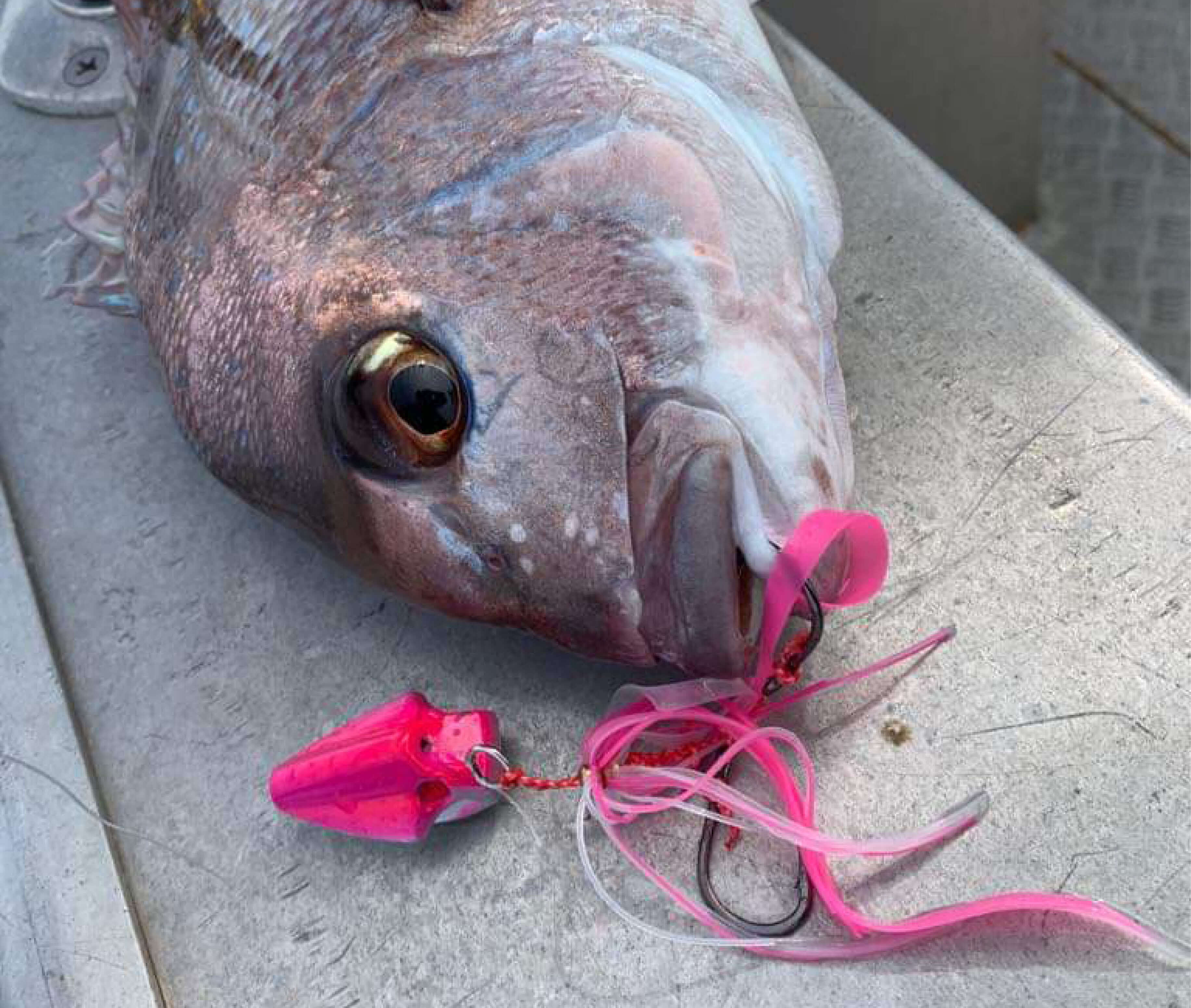

As the name suggests, these are smaller jigs, usually made from lead or tungsten and are usually a thinner profile which fall quickly through the water column. They can be cast ahead of the drift and fished with a twitching motion or dropped vertically and used with a slow pitch technique.
Size range varies from an ultra-small 9 grams through to around 45 grams.
Fish species targeted include snapper, trevally, kahawai, and gurnard through to bait fish such as jack mackerel, blue koheru and blue mackerel. (Tip: The Edge Microbait 9g is an absolute weapon for these smaller bait fish)
Burnsco offers a range of different types of micro jigs from Edge Fishing and Ocean Angler.
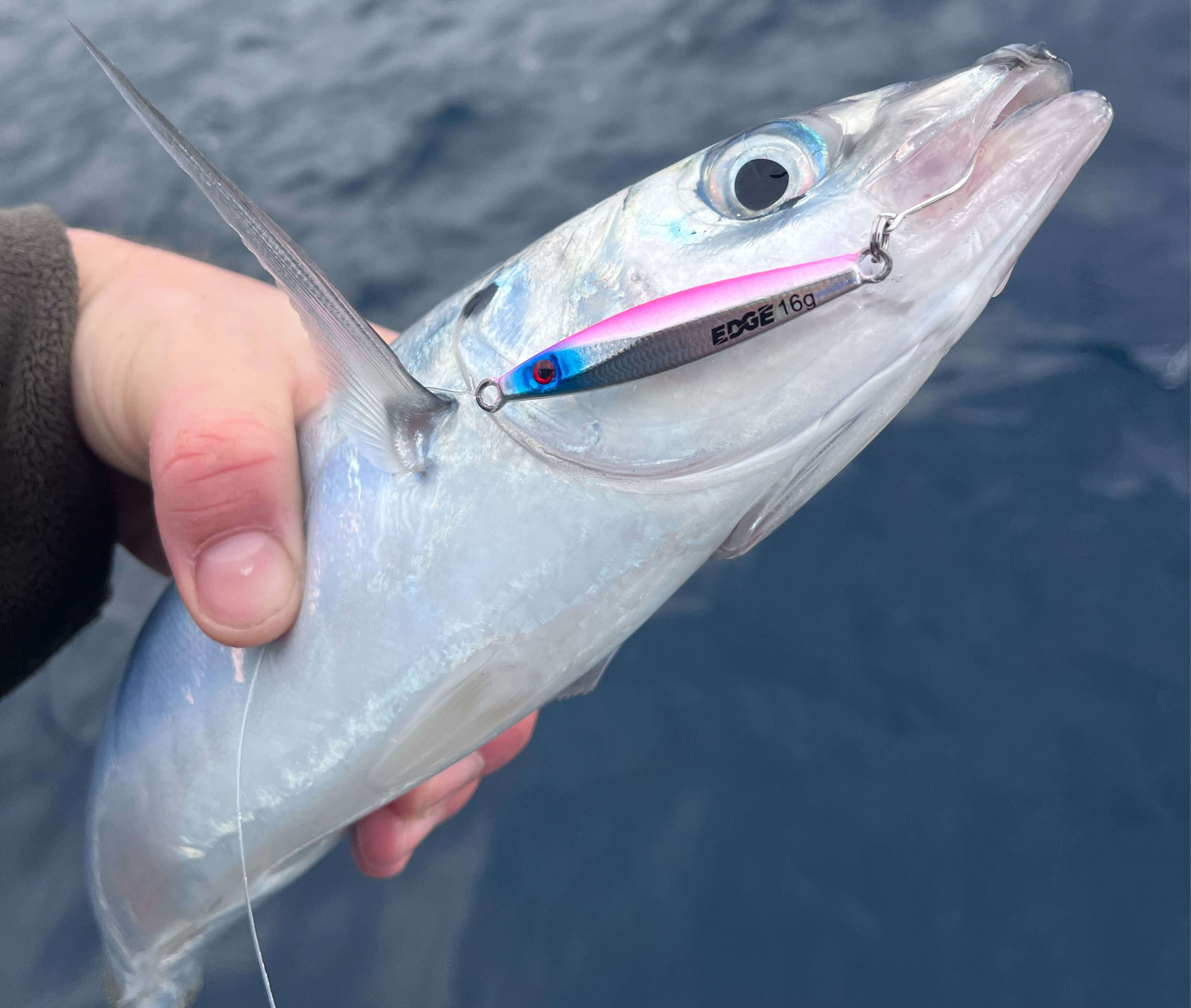

These are bigger jigs with a longer profile made to cut through the water column relatively quickly and descend with a fluttering and twirling action which triggers bites. These are retrieved in a medium / fast motion using the rod to do majority of the work.
Size ranges are 200 grams to 400 grams and vary between the different styles on offer.
Fish species targeted with mechanical jigs are first and foremost kingfish, or if fishing in deeper water of 150m+ then gemfish, bluenose, hapuka or bass. Snapper can also be caught on these and they are generally of a bigger size.
Burnsco offers a range of different shapes and sizes from Edge Fishing, Glowbite and Thirty Seven.
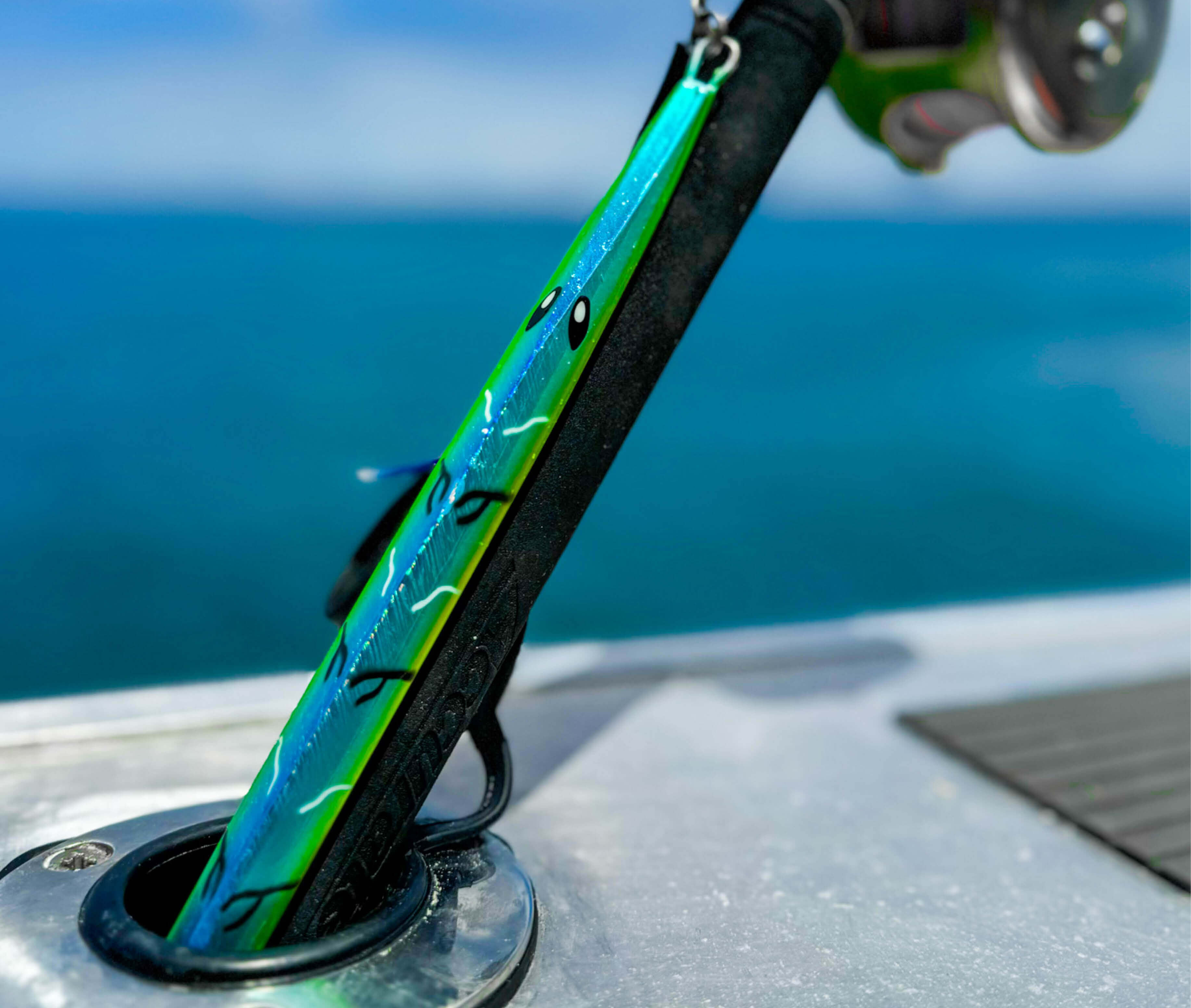

Designed primarily for pelagic species including marlin, the various tuna species, mahi mahi and shortbill spearfish there is a wide range of lures and accessories on offer. The bigger marlin/tuna lures come unrigged so you can capitalise on what option works for you, while the smaller tuna lures designed for skipjack come rigged in the packet ready to fish.
Burnsco also offer dredges which are made to be used in conjunction with your lures, we have the mylar strip dredges and soft squid dredges and the weights to go with them.
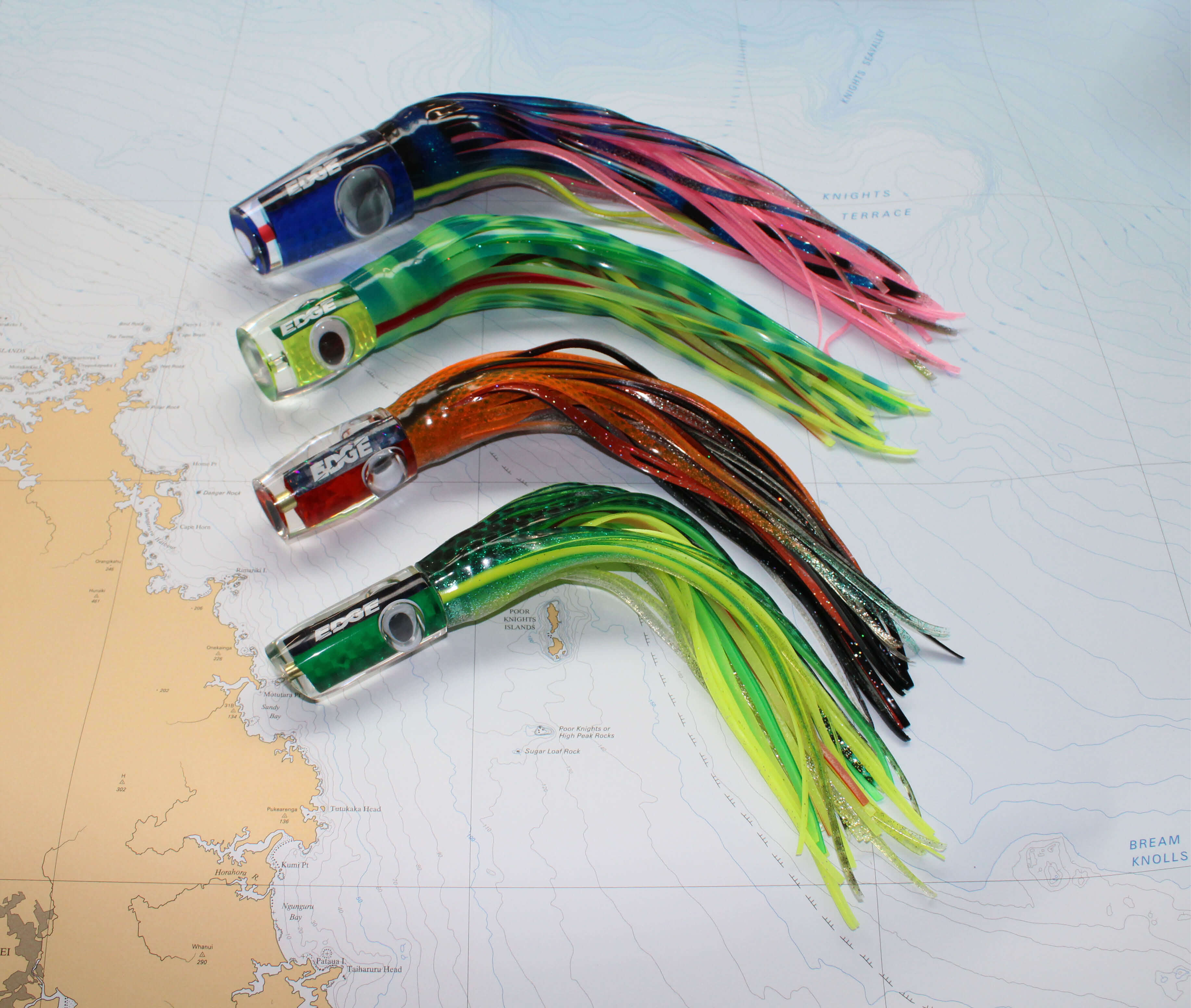

There are 4 main categories when it comes to hard body lures in the Burnsco range, these are: Stick baits, Poppers, Bibbed lures and spinning lures.
Stick baits and poppers are generally made with a high-density ABS plastic and come rigged with either treble or single hooks.
These come in both the floating and slow sinking variety and are used to target kingfish on the surface.
Bibbed lures have a large plastic bib on the front of the lure with a split or solid ring in the centre of it, this is where you attach your leader. They are designed to be trolled behind a boat or kayak at 2-7 knots and primarily target kingfish.
Spinning lures are generally smaller and quite often are made from lead or tin. They are designed to be cast and retrieved and are typically used to target kahawai, trevally, and salmon.
Burnsco offers hard body lures from renowned brands such as Edge Fishing, Nomad Design and Kilwell.
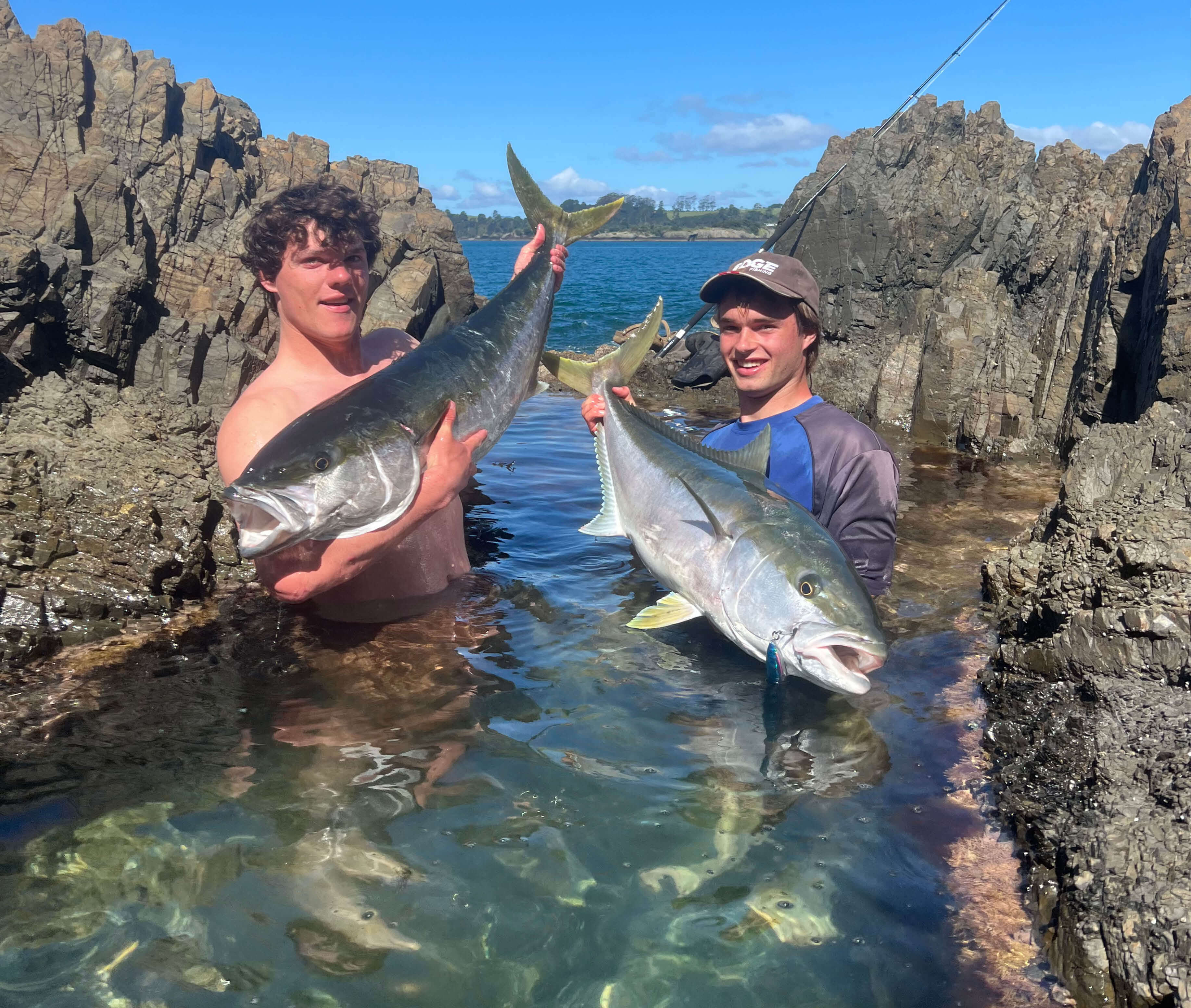

You guessed it, these are designed to be used in freshwater for targeting species such as rainbow trout, brown trout, salmon, and perch.
There are two main styles, trolling lures (generally with a short bib) or spinning lures (generally slightly heavier to enable a better cast). However, with the use of a downrigger, or clips (to keep your line angle low and keep them in the water), all these lures can be trolled slowly.
Each lure has a different action, we will go further in depth for each of these in later blogs.
Burnsco have lures from Tasmanian Devil, Storm, Rapala, Edge Fishing, Bluefox and Kilwell.
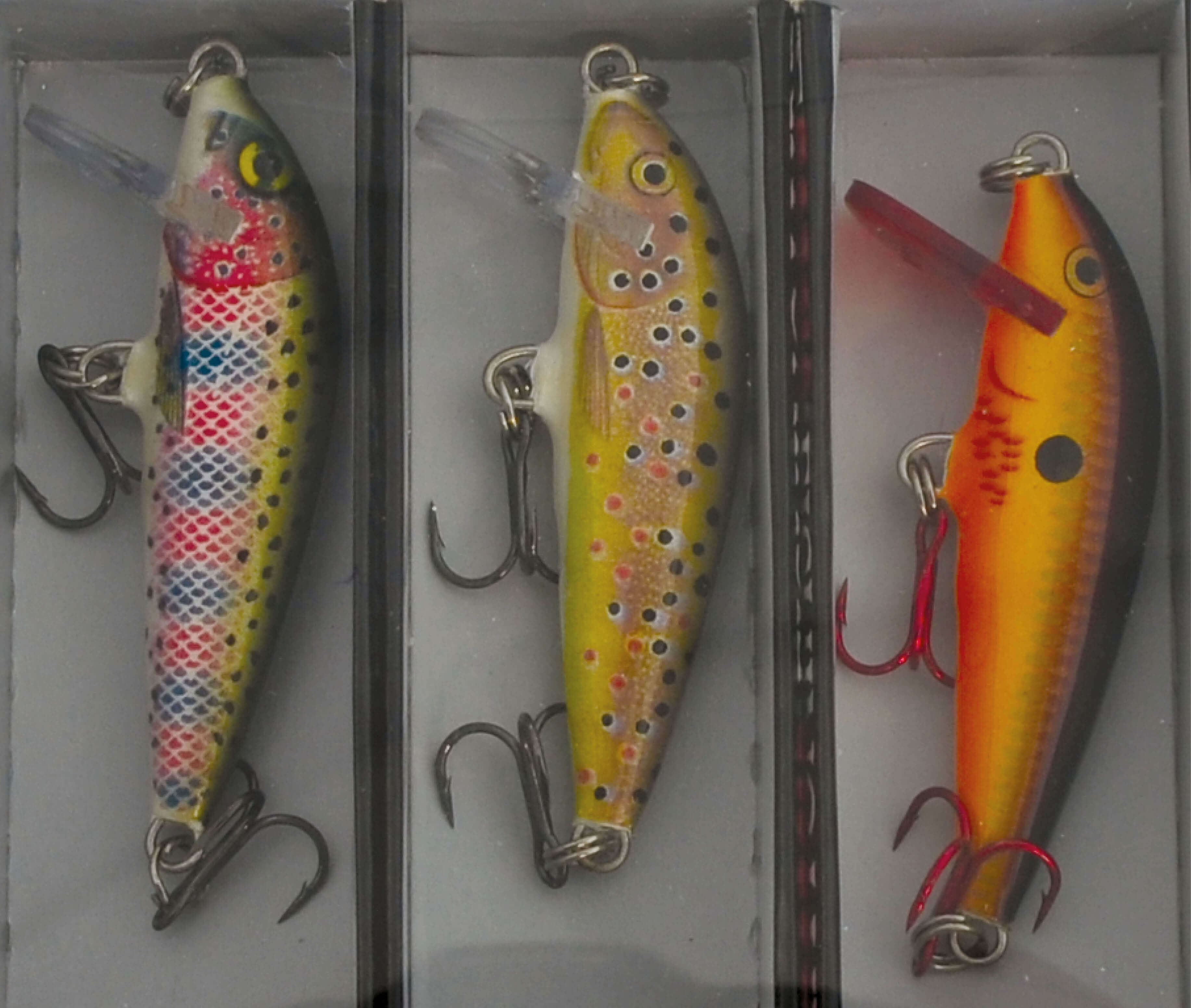

Another pretty technical name … these are used to target squid.
They have a weight on the front which helps the lure to sink nose down and are designed to mimic shrimp and prawns, which squid prey on. Due to the way squid attack their prey with the tentacles first, the lure is design with two sets of multi-pronged barbless hooks, these lock onto the squid tentacles, and you can wind them in.
Burnsco offer options from Black Magic, Shimano, Edge Fishing and Yamashita.
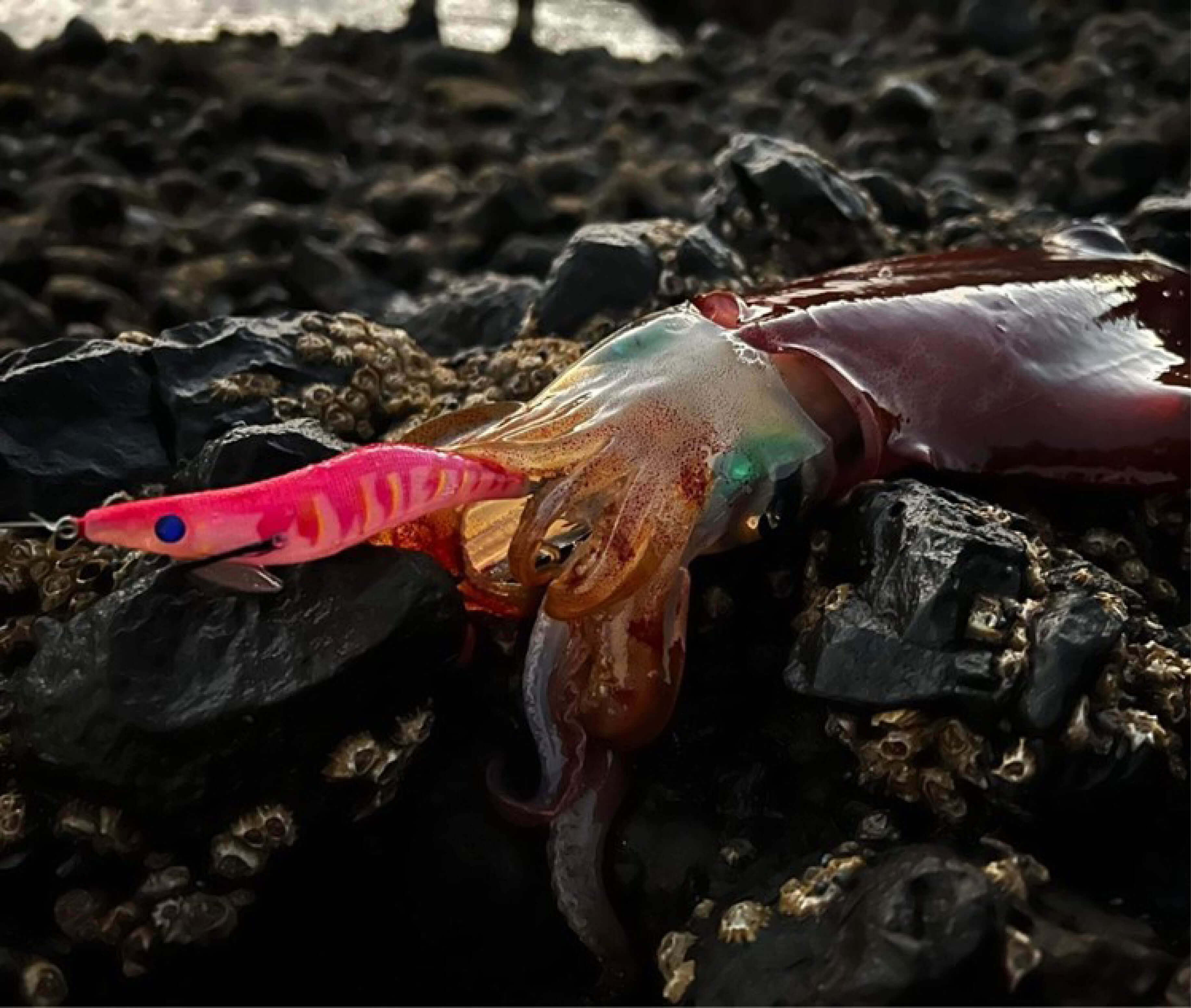

Rigs
There are many different types of pre-made rigs available which have different purposes. Let’s quickly run through those now.
Surfcasting Rigs – These are designed to be used with longer rods off the beach or rocks. They are generally pulley rigs and enable you to cast further to reach gutters and holes which you may not be able to with a standard ledger rig. Utilising sand sinkers with these rigs will enable your baits to stay in the strike zone longer and not pull around with the swell and current.
Ledger Rigs – Usually 2 or 3 hooks on these rigs which protrude horizontally from the backbone. Simply tie the swivel onto your main line and add a reef style sinker onto the loop on the other end, add bait and you are fishing! Fish these vertically while on anchor for the best results.
Strayline Rigs – Designed for stray lining, these have either one or two hooks close together at one end and a swivel at the other. Some rigs have a sinker already added so no extra weight is required. Put both the hooks into one piece of bait and ensure the hooks are exposed to maximise your hook up chances. Cast your bait down a berley trail, engage the bait runner function or loosen your drag so the fish can take line. Once you start getting a run, click the bait runner into gear or add tension until the rod loads up and you are into it!
Hapuka Rigs – These are used to target reef dwellers in deeper water such as hapuka, bass, bluenose, and gemfish. Due to the size of these fish, the rigs are usually made on a 200-300lb backbone, they are essentially an oversized ledger rig! Attach a 20-40oz sinker on the bottom to enable your line to drop quicker (you are usually fishing these in 150m+) and tie the swivel end to your mainline, add larger strip baits and drop to the depths!
Sabiki Rigs – Designed to target smaller baitfish, usually to use as live baits or, fresh dead baits (you can eat the smaller fish too! Piper and jack mackerel are both a tasty table fish.) Sabiki rigs comprise of 3-6 small hooks tied on a backbone normally 10-15cm apart. Attach a sinker (usually 1-2oz is sufficient) to the bottom and the swivel to your mainline and drop over the side of the boat or wharf. These are a great option if you are taking kids to the wharf as you can catch a wide variety of species with them and keeps them entertained for longer!
Well, there you have it, a very brief run down of the different categories on offer and the uses for each of them.
Now, the only thing to decide is what colour to pick ….
Do you have any questions?
Please, contact our friendly team on 0800 102041 or email: website@burnsco.co.nz
We provide general information on products, not personal advice. Always seek the help of a relevant tradesperson if you have a technical query.